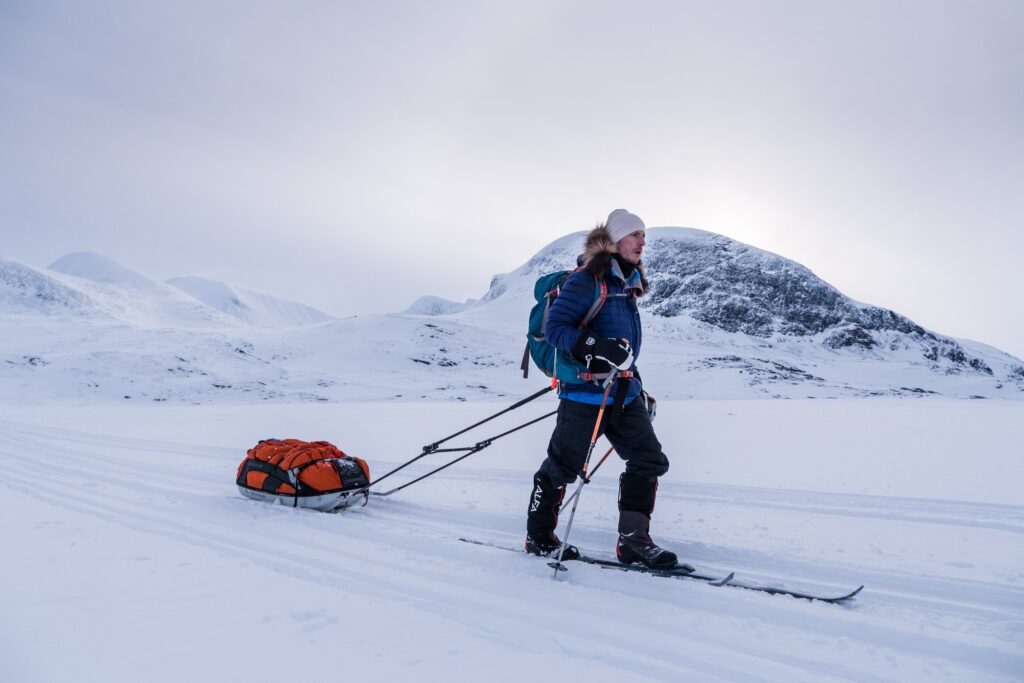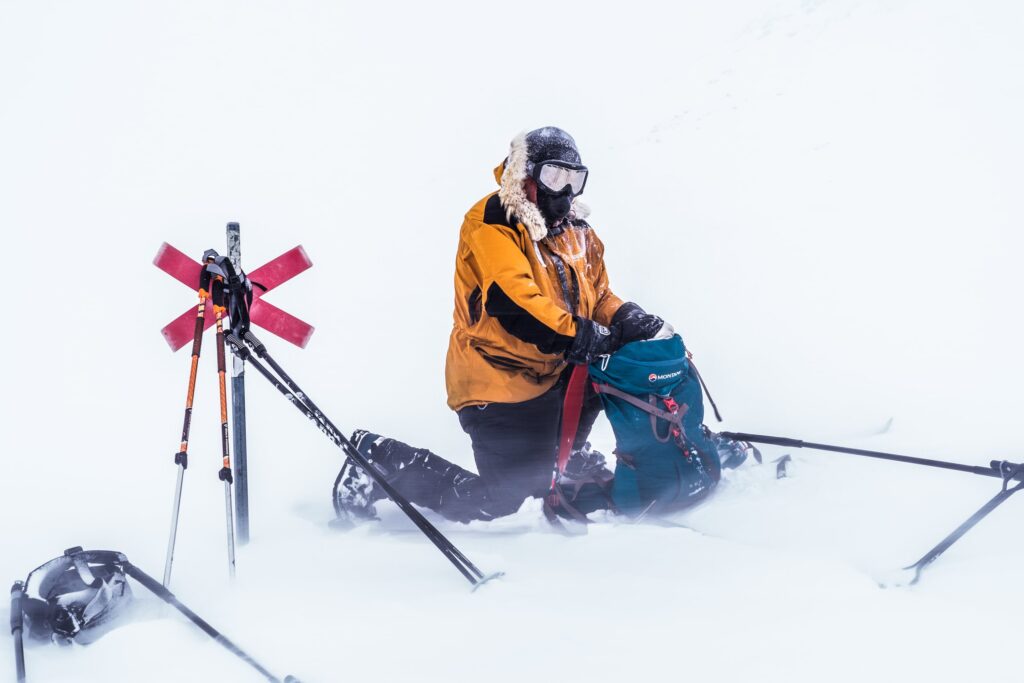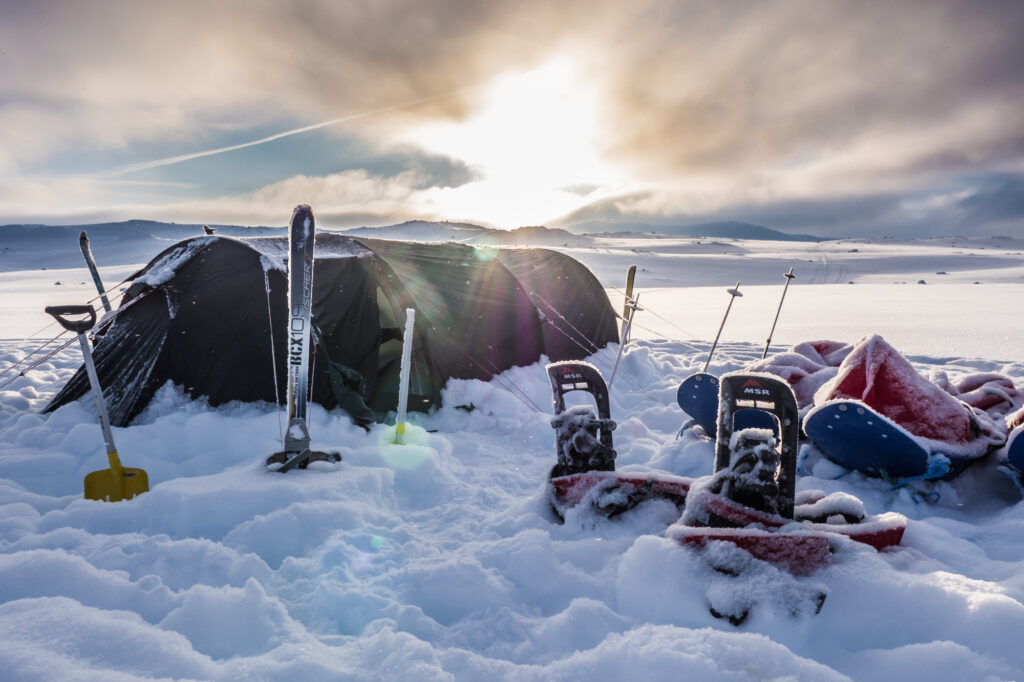
Introduction: Inspiring Challenges of the Arctic
Throughout history, the Arctic has captivated the hearts and minds of explorers, adventurers, and those seeking to push the boundaries of human endurance. From the intrepid voyages of early polar explorers to the modern-day feats of endurance, the Arctic has always been a realm of inspiration and challenge. Among the many incredible adventures that unfold in this frozen wilderness, the Arctic Spine Race stands as a true test of courage, determination, and self-sufficiency. In this article, we delve into the world of the Arctic Spine Race, exploring the skills required, the thrill of the journey, and how anyone with the right mindset can embark on this extraordinary expedition.
1. What Experience Do I Need to Take Part?
In continuation of the Spine ethos, self-sufficiency is the cornerstone of the Arctic Spine Race. Participants must possess the ability to rely on themselves and their equipment in cold weather conditions. Personal admin plays a big part in being able to make it to the finish. Looking after yourself is one of the most important elements of performing in cold environments. While this race demands resilience and physical fitness, what truly matters is your ability to be self-sufficient.
This race offers a unique opportunity for fit individuals who dare to push their limits, embrace self-reliance and explore the stunning Arctic landscapes. We guarantee you a life-changing adventure that will leave you with unforgettable memories and a profound sense of accomplishment.
2. Skis or Snowshoes: Choosing Your Gear
The choice between skis and snowshoes ultimately depends on personal preference and conditions of the trail at the time, but most competitors will opt for skis. Skis offer the advantage of speed, allowing participants to cover greater distances efficiently. Snowshoes, on the other hand, provide stability and are suitable for uneven or deep snow. Beginners can opt for either, as both can be learned easily with some instruction and practice.

3. Learning to Ski and Pull a Pulk: Easier Than You Think
If you’ve never skied or pulled a pulk, fear not. With the right training, you can easily acquire these skills. Everyone we have ever shown has picked it up in half a day. We will teach you when you arrive and you will have plenty of time to practice before the event.
Alternatively, ski resorts and training centres often offer lessons tailored for beginners, focusing on basic techniques, balance, and control. Similarly, learning to handle a pulk involves understanding weight distribution, harness systems and techniques for pulling. With practice, these skills become second nature.
4. The Key Skills Required for the Arctic Spine Race
Taking on the Arctic Spine Race requires a combination of physical, mental and technical skills. The good news is that they can all be learned and honed. Here are some key skills you should possess or develop to take part:
Cold Weather Adaptation: Being able to handle the cold is vital for the Arctic Spine Race. Learn how to layer clothing effectively to stay warm and prevent cold weather injuries.
Winter Camping and Survival Skills: Prepare for camping in cold and icy conditions. You must be confident in your tent and stove routines and you’ll need basic maintenance skills for your gear.
Navigation and Route Planning: The Kungsleden Trail is well marked but navigating in potential white out conditions requires a solid understanding of maps, compasses and GPS devices.
Endurance and Mental Resilience: Previous experience of endurance races or hiking expeditions will provide valuable insights and help you understand your body’s response to extreme conditions.
Adaptability (and a sense of humour): The Arctic environment is ever-changing, with unpredictable weather patterns and challenging terrain. The key is to embrace adaptability, stay flexible in your plans, and be prepared to adjust to unexpected situations. It will be an expedition of major highs and lows, not only with the terrain but with the emotional roller-coaster that everyone will feel.

5. Developing The Skills Required When You Don’t Live in the Arctic!
You can develop the necessary skills for the race regardless of where you live. We will produce a series of training videos and virtual workshops that you can draw from as well as offering a three day training course prior to the race. This will cover skiing, tent and stove routines, pulks and pulk packing, cold weather injuries, equipment and clothing. There will also be a mandatory instruction, practice and assessment phase so that we can ensure everyone on the expedition will be safe.
Our advice is to immerse yourself in research and connect with other experienced adventurers. They can provide expert guidance on physical conditioning, navigation methods, cold weather survival, sleeping setups and more. Get in touch and we can help connect you. We can also recommend Dr Mark Hines who runs an independent Arctic Ultra training course in the UK in November.
6. Training for Success: Preparing for the Arctic Spine Race
Training for the race will require a multifaceted approach that combines cardiovascular endurance, strength, and mental resilience. If you need, consult with a coach or experienced ultra-endurance athlete to develop a training plan suited to you.
Emphasise outdoor training in cold weather and on varied terrains to simulate race conditions. Practice navigation and using your gear, including your clothing, skis or snowshoes and camping equipment.
Pay attention to your nutrition and hydration needs during training. Develop a nutrition plan and practice it during your long training sessions. Familiarise yourself with food options suitable for the cold conditions.

7. Essential Gear: Your Arctic Expedition Kit
Packing the right gear is essential for a successful Arctic adventure. Some of the key items you’ll need include:
Mode of travel: You must choose to use either skis or snowshoes and opt to either carry a backpack or pull a sled to carry your kit.
Layered clothing: Opt for moisture-wicking base layers, insulating mid-layers, and windproof outer shells to protect yourself from the Arctic cold.
Sleeping bag and tent: Choose lightweight, high-quality gear that can withstand extreme weather conditions.
Food and cooking equipment: Pack high-calorie, lightweight foods that are easy to prepare and provide the necessary energy for your journey.
Navigation tools: Carry reliable maps, compasses, and GPS devices to navigate the Arctic terrain confidently.
Safety equipment: Include items such as a first aid kit and emergency communication devices.
A detailed and fully specified solo and team equipment list will be made available to you.
Concluding Advice for Aspiring Arctic Adventurers
The Arctic Spine Race beckons to those seeking an extraordinary adventure that tests the limits of physical and mental endurance. By developing self-sufficiency, acquiring the cold weather skills, and embracing the challenges with passion and determination, anyone with a fit body and an adventurous spirit can conquer this remarkable race.
Are you ready to embrace the Arctic and etch your name in the Spine history books? The Arctic Spine Race awaits you, beckoning you to discover the depths of your own potential and embark on a journey of a lifetime.
If you’re keen to join us or want to talk further, get in touch by either booking a call or contacting us at info@thespinerace.com.

